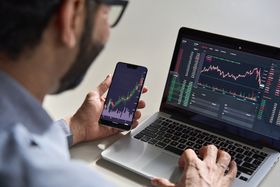When at the Breakeven Point for a Call and the Contract Goes Through, Do You Lose the Upfront Money or Only the Shares at the Strike Price?
This is about buying shares and call options at a breakeven point and general things that follow when you do. Find out what strike price and breakeven point means.
Published May 12, 2021
Firstly, a call option is a contract that gives the owner the option, but not the requirement to buy a specific underlying stock at a predetermined price (known as the “strike price”) within a certain time period (or “expiration”).
Buying calls or having a long call position feels a lot like gambling. It allows traders to pay a relatively small amount of money upfront to enjoy, for a limited time, a larger number of shares than we’d be able to buy with the same cash. Call buyers generally expect the underlying stock to rise significantly, and buying a call option can provide greater potential profit than owning the stock outright.
To answer your question, let's say you are buying a call option at a 50$ strike price and a 5$ premium (the upfront money). The breakeven point — above which the option starts to earn money, have intrinsic value or be in the money — is $55 per share. That’s the strike price of $50 plus the $5 cost of the call. When the stock trades between $50 and $55, you will recoup some of the initial investment, but the option does not show a net profit.
To sum it up, if you are at the breakeven price, the strike price plus the premium, you haven’t lost or made any money. Just hold your thumbs and hope the price goes higher than your breakeven point.
Related Articles

Is AvaTrade the Trading Platform Any Good?
Filip Dimkovski
June 10, 2021

Leverage on Avatrade: What It Is and How to Change It
Andrew Moran
December 22, 2024

eToro vs Coinbase: Compare Products, Features, Fees, & More
Andrew Moran
October 31, 2021

Webull vs. eToro: Compare Products, Features, Fees, & More
Andrew Moran
December 23, 2024

Day Trading Options: Best Brokers and Beginner Strategies
Filip Dimkovski
December 23, 2024
